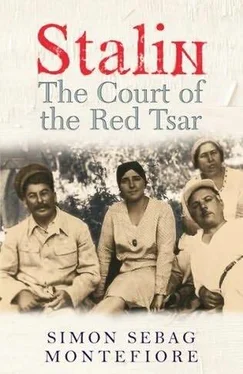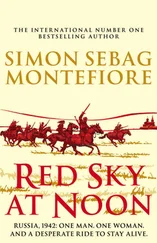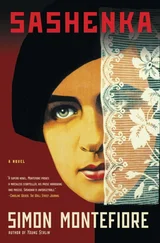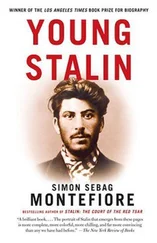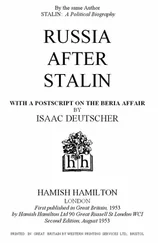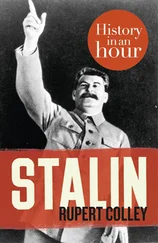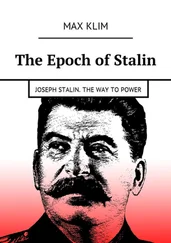His paranoia was part of a personal vicious circle that was to prove so deadly for many who knew him, yet it was understandable. His radical policies led to excessive repressions that led to the opposition he most feared. His unbalanced reactions produced a world in which he had reason to be fearful. In public he reacted to all this with a dry humour and modest tranquillity but one finds ample evidence of his hysterical reactions in private. “You cannot silence me or keep my opinion confined inside,” Stalin wrote to Voroshilov during the struggles with the Rightists, “yet you claim ‘I want to teach everyone.’ When will these attacks on me end? Stalin.” 30It extended to the family. One of his letters to Nadya went missing. Stalin was obsessed with the secrecy of his letters and travel plans. He impulsively blamed his mother-in-law but Nadya defended her: “You unfairly accused Mama. It turns out the letter was never delivered to anyone… She’s in Tiflis.” 31
Nadya laughed that the students at the Academy were divided into “Kulaks, middle-peasants and poor peasants,” but she was joking about the liquidation of over a million innocent women and children. There is evidence that Nadya happily informed Stalin about his enemies, yet that was changing. The rural struggle divided their friends: her adored Bukharin and Yenukidze confided their doubts to her. Her fellow students had “put me down as a Rightist,” she joked to Stalin, who would have been troubled that they were getting to his wife at a time when he was entering stormy waters indeed. 32
* * *
On holiday in the south, Stalin learned that Riutin, an Old Bolshevik who had been in charge of Cinema, was trying to create an opposition to dismiss him. He reacted fast to Molotov on 13 September: “with regard to Riutin, it seems it’s impossible to limit ourselves to expelling him from the Party… he will have to be expelled somewhere as far as possible from Moscow. This counter-revolutionary scum [25] Nechist means an unclean devil in peasant folklore.
should be completely disarmed.” 33Simultaneously, Stalin arranged a series of show trials and “conspiracies” by so-called “wreckers.” Stalin redoubled the push for collectivization and race to industrialize at red-hot speed. As the tension rose, he stoked the martial atmosphere, inventing new enemies to intimidate his real opponents in the Party and among the technical experts who said it could not be done.
Stalin frantically ordered Molotov to publish all the testimonies of the “wreckers” immediately and then “after a week, announce that all these scoundrels will be executed by firing squad. They should all be shot.” 34
Then he turned to attacking the Rightists in the government. He ordered a campaign against currency speculation which he blamed on Rykov’s Finance Commissars, those “doubtful Communists” Pyatakov and Briukhanov. Stalin wanted blood and he ordered the cultivated OGPU boss, Menzhinsky, to arrest more wreckers. He told Molotov “to shoot two or three dozen saboteurs infiltrated into these offices.” 35
Stalin made a joke of this at the Politburo. When the leaders criticized Briukhanov, Stalin scribbled to Valery Mezhlauk, reporting on behalf of Gosplan, the economic planning agency: “For all new, existing and future sins to be hung by the balls, and if the balls are strong and don’t break, to forgive him and think him correct but if they break, then to throw him into the river.” Mezhlauk was also an accomplished cartoonist and drew a picture of this particular torture, testicles and all. 36Doubtless everyone laughed uproariously. But Briukhanov was sacked and later destroyed.
That summer of 1930, as the Sixteenth Congress crowned Stalin as leader, Nadya was suffering from a serious internal illness—so he sent her to Carlsbad for the best medical treatment and to Berlin to see her brother Pavel and his wife Zhenya. Her medical problems were complex, mysterious and probably psychosomatic. Nadya’s medical records, that Stalin preserved, reveal that at various times, she suffered “acute abdominal pains” probably caused by her earlier abortion. Then there were the headaches as fierce as migraines that may have been symptoms of synostosis, a disease in which the cranial bones merge together, or they may simply have been caused by the stress of the struggle within the USSR. Even though he was frantically busy arranging the Congress and fighting enemies in the villages and the Politburo, Stalin was never more tender.
4. FAMINE AND THE COUNTRY SET
Stalin at the Weekend
“Tatka! What was the journey like, what did you see, have you been to the doctors, what do they say about your health? Write and tell me,” he wrote on 21 June. “We start the Congress on the 26th… Things aren’t going too badly. I miss you… come home soon. I kiss you.” As soon as the Congress was over, he wrote: “Tatka! I got all three letters. I couldn’t reply, I was too busy. Now at last I’m free… Don’t be too long coming home. But stay longer if your health makes it necessary… I kiss you.” 1
* * *
In the summer, Stalin, backed by the formidable Sergo, guided one of his faked conspiracies, the so-called “Industrial Party,” to implicate President Kalinin, and seems to have used evidence that “Papa,” a ladies’ man, was wasting State funds on a ballerina. The President begged for forgiveness. 2
Stalin and Menzhinsky were in constant communication about other conspiracies too. Stalin worried about the loyalty of the Red Army. The OGPU forced two officers to testify against the Chief of Staff, Tukhachevsky, that gifted, dashing commander who had been Stalin’s bitter enemy since the Polish War of 1920. Tukhachevsky was hated by the less sophisticated officers who complained to Voroshilov that the arrogant commander “makes fun of us” with his “grandiose plans.” Stalin agreed they were “fantastical,” and so over-ambitious as to be almost counter-revolutionary. 3
The OGPU interrogations accused Tukhachevsky of planning a coup against the Politburo. In 1930, this was perhaps too outrageous even for the Bolsheviks. Stalin, not yet dictator, probed his powerful ally, Sergo: “Only Molotov, myself and now you are in the know… Is it possible? What a business! Discuss it with Molotov…” However, Sergo would not go that far. There would be no arrest and trial of Tukhachevsky in 1930: the commander “turns out to be 100% clean,” Stalin wrote disingenuously to Molotov in October. “That’s very good.” 4It is interesting that seven years before the Great Terror, Stalin was testing the same accusations against the same victims—a dress rehearsal for 1937—but he could not get the support. 5The archives reveal a fascinating sequel: once he understood the ambitious modernity of Tukhachevsky’s strategies, Stalin apologized to him: “Now the question has become clearer to me, I have to agree that my remark was too strong and my conclusions were not right at all.” 6
* * *
Nadya returned from Carlsbad and joined Stalin on holiday. Brooding how to bring Rykov and Kalinin to heel, Stalin did not make Nadya feel welcome. “I did not feel you wanted me to prolong my stay, quite the contrary,” wrote Nadya. She left for Moscow where the Molotovs, ever the busybodies of the Kremlin, “scolded” her for “leaving you alone,” as she angrily reported to Stalin. Stalin was irritated by the Molotovs, and by Nadya’s feeling that she was unwelcome: “Tell Molotov, he’s wrong. To reproach you, making you worry about me, can only be done by someone who doesn’t know my business.” 7Then she heard from her godfather that Stalin was delaying his return until October.
Stalin explained that he had lied to Yenukidze to confuse his enemies: “Tatka, I started that rumour… for reasons of secrecy. Only Tatka, Molotov and maybe Sergo know the date of my arrival.” 8
Читать дальше
